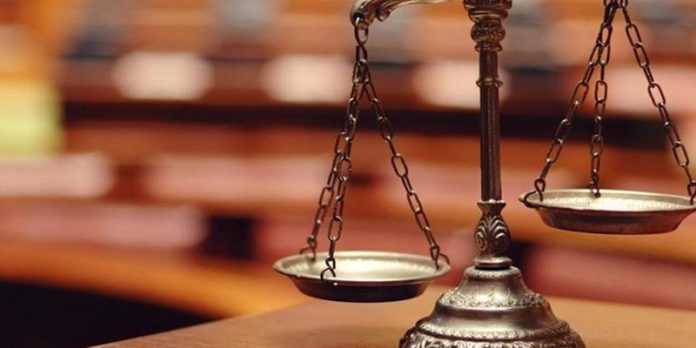This article is written by Nitish Pattanaik, a student of Amity Law School, Kolkata.
Table of Contents
Facts of the case in brief
The main appellant, in this case, was Mr Pankaj Mahajan who was married in the year 2000. He got married happily and it was an arranged marriage. After marriage, they decided to stay in Amritsar in the house of Mr Mahajan along with his parents. One year later a child was born from them who was a Girl and this happened in 2001. Due to current disturbances the child is with the mother.
After few days of their marriage, the behaviour of the wife was really strange, she was acting like a mentally ill patient and in a completely abnormal way. She was acting quite ill and that was causing harm to the appellant. Her behaviour includes excessive anger, always aggressive and suspicious and she used to threaten the family of the appellant.
Few months later they shifted to a new house where the behaviour of the respondent became strange. She threatened to commit suicide. She went to terrace sometimes to commit suicide and the appellant saved her many times. She tried this many times but due to certain care and involvement of appellant she was prevented from doing these things.
After gathering certain information, the appellant came to know that his wife is a patient of schizophrenia and earlier she was also being treated for the same. This disease deals with mental illness and depression. For this he took his wife and consulted several doctors but the catch was her condition did not improve at all. She carried other activities like insulting him publicly and one day she also caused physical harm to the appellant causing an injury in his arm after falling from a staircase from where she pushed him.
After all these things the husband decided to talk about all these to his in-laws house. So, he wrote a letter to his mother-in-law reporting the incident of committing suicide and all drastic steps carried by his wife. In 2002 he reported this matter to the SSP of the town and he decided to file a petition at the district court and decided for a divorce. In this case, the Additional district court judge gave the decision on favour of the appellant and granted him the permission for divorce.
After seeing all these the respondent filed a case in the High court of Punjab and Haryana where it was decided in favour of the defendant and the judgement of the district court was set aside. After all these the appellant decided to appeal in the Supreme Court.
Issues raised
The main issues in this which was raised in this case were:
- Whether the wife who is also the respondent, in this case, has treated his husband who is also the respondent in this case with cruelty?
- Whether the above facts stated about the wife is correct or not, is she really a mental patient and acts in abnormal way with his husband i.e., the petitioner in this case, is she suffering from a disease which is not curable at all as stated by petitioner.
- Does the Husband is entitled to get any relief from the respondent or the family of the respondent?
Rule of Law
Section-13 of the Hindu Marriage Act – Section-13 of the Hindu Marriage Act is applied in this case.
Judgement
The judgement was given as follows:
The petitioner found that his wife is abnormal after short span of time just after his marriage and her behaviour astonished him a lot. She acted in a very aggressive manner and very strange manner. She went to such an extent that many times she tried to commit suicide for which she had threatened her husband many times earlier. After certain enquiry, it was found that the wife was suffering from mental illness and schizophrenia. She did not succeed in committing suicide as her husband prevented her many times and saved her.
In a hope that her illness will cure the appellant took her to many places and hospital in order to find a solution for her illness but there was no development. The use of electric shock was also tried by the doctors but it was of no use. But she did not recover nor he was cured no matter how costly the treatment is. Before marriage she had also same problems and she was given the treatments at least four times before their marriage. This is only known by the appellant. How much more was she medicalised and treated is not known to appellant. It was moreover found that the disease in not curable. In many cases it was noticed that the respondent has caused physical injury to her husband and many times slapped him even if in front of everyone.
As stated earlier by the father of the respondent it shows that she had the mental illness which is not curable and the care of her child was taken by her grandparents. The statements of the doctors also suggested that she was mentally ill. Although they have a child the mother did not take proper care of her. It was also noticed many times the behaviour of the respondent was not good with the owners of the house or landlord of their house where they were staying.
Certain other incidents like fitting with illogically and irrelevantly clearly shows that she is mentally ill as per the statement provided by the mother-in-law of respondent. Other incidents like abusing her husband in front of his friends and she used to fight with the maids and washermen who come to their house. She also slaps the appellant randomly whenever she gets angry and used to threaten him with the status of her father.
The decision was in the favour of the appellant as these things were noticed and it acts as an important factor in this case giving the chance to the appellant and helping the court to reach a conclusion:
- Giving continuous threat for committing suicide;
- Pushing from staircase foe which he was injured;
- Slapping him;
- Misbehaving Infront of everyone;
- Not doing household work;
- Not taking care of her child;
- Doing all kinds of weird things that is enough to prove her abnormality.
After studying all these the main judgement which was given by the court is husband has enough record to prove the wife has a mental disorder and it is really difficult to stay with her. So, it was held that the judgement given by the high court is overruled and the appellant was held not liable and was provided the decree for divorce and their marriage was dissolved. The appellant has to pay the compensation of Rs. 2 Lakhs as alimony fee in the name of his daughter in two equal instalments and Rs. 3 Lakhs for FDR in any nationalised bank. When the daughter will be major, she is permitted to withdraw this amount. Until that the wife is permitted to withdraw once in a three month for the expenses of the child.
Conclusion
Certain things need to be clarified before getting married; so that it will not create a problem afterwards. Problem is common nowadays in marriage but dealing with it with an effective way is really important. Marriage doesn’t mean that one needs to follow it by hook or crook, if the person is not comfortable or it creates a lot of problem for him, then he can surely opt for legal remedies as per the Indian Law.
Marriage is said to be a ceremonial harmony between two people when they commit each other to stay together and face any problem together afterwards. Every time doesn’t remain and the mentality of people are not predicted same every time. They can take any decision in a sudden manner which may astonish us. Likewise, if the concept of marriage exists in our society then we have to accept that the divorce concept also is there in society. There are also laws and provisions which exist in the Indian legal system for divorce.
If we will talk about various reasons for separation of couples or divorce then the concept of modern society plays an important role. Nowadays modern women are becoming independent and they don’t really need to be dependant on certain things. So, this can be called a major factor. Another such factor or reason is communication gap between the couples. Now, this thing plays an important role in modern-day cases. Due to a lack of proper communication many divorces are taking place between the couples. Other problems like cheating, procreative problems in marriage also exist and they are also problem creators for breaking of marriage.
In every marriage, there should be a consideration and the marriage should be saved and divorce is not the correct solution for every case. But when the things go beyond the limit then divorce can be called as an important element for saving a person’s life. As we saw in this case. So, divorce should be the last option for a person.
LawSikho has created a telegram group for exchanging legal knowledge, referrals, and various opportunities. You can click on this link and join:
 Serato DJ Crack 2025Serato DJ PRO Crack
Serato DJ Crack 2025Serato DJ PRO Crack











 Allow notifications
Allow notifications



